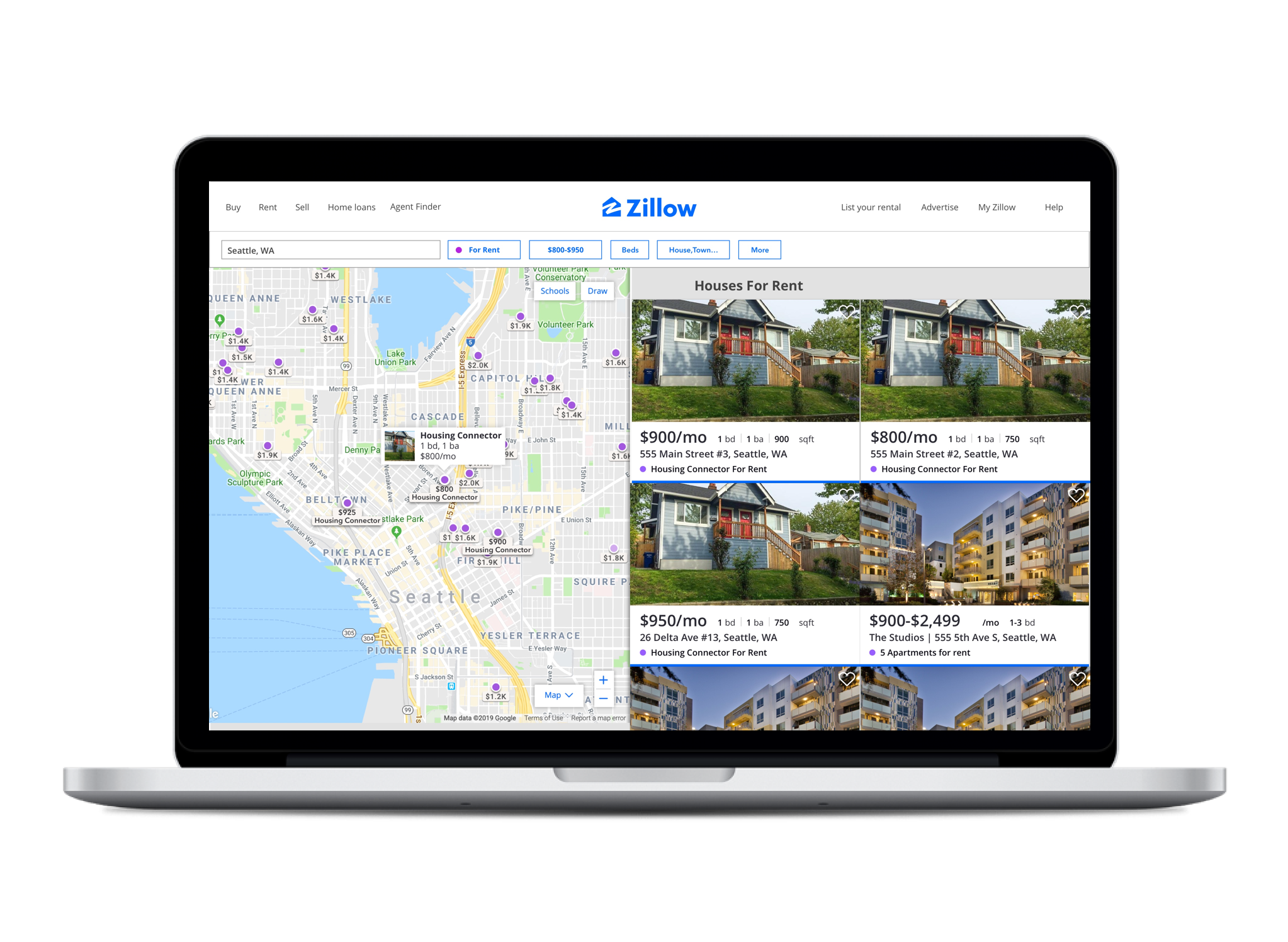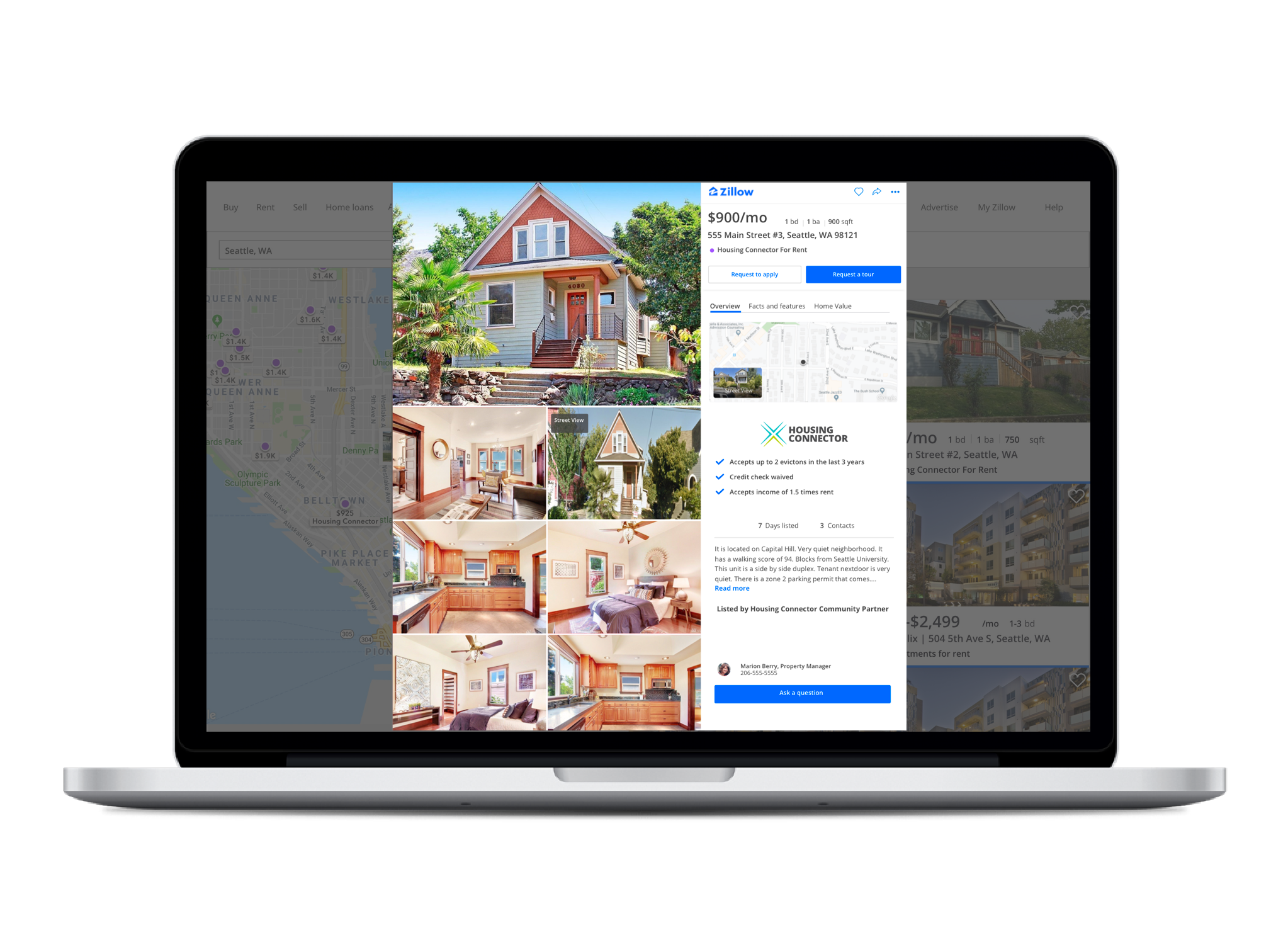Ten months ago I accepted the role to be the first software engineer on the Social Impact Product team at Zillow. I was excited to leverage my expertise and the Zillow platform to foster opportunities for our neighbors experiencing homelessness.
Enter the Zillow Affordable Housing Search Tool project, a partnership between Zillow and Seattle nonprofit, Housing Connector, that acts as a landlord liaison program to help private property owners and landlords easily and successfully rent to people experiencing homelessness. When we first signed on to build this tool, my project manager and I were determined to not build a standalone solution. Our rentals product on Zillow.com already functions as a connector between landlords and property managers and people in need of housing. So it was a natural fit to build this new tool directly on our existing tech stack.
We decided on developing a socially inclusive design, and building a solution into our existing rentals product. We saw the work of Housing Connector as perfectly aligned with Zillow’s mission to “Give people the power to unlock life’s next chapter.” Helping people overcome homelessness with the support and care of the community is perhaps the most powerful example of unlocking a new chapter!

With the intent of building it into our main rentals product, I embedded myself fully into our Seattle Rentals Team. I participated in their sprint planning, planning pokers (work estimation exercise), and standups. Our work touched our search experience, data ingestion, reporting, and rental products. The project included contributions from over 30 colleagues and consultations with another 40. It spanned our Seattle and San Francisco offices and multiple Zillow Group Brands. To say it’s been a busy 10 months would be an understatement; but by aligning our work with other teams we ensured Housing Connector would be a win for all. An added bonus was being able to introduce a large team to the concept of socially inclusive engineering.
By integrating our work on the tool into the existing Zillow listing process, we increased the chances of it being maintained over time. It’s also started several organic conversations on how to incorporate this work into future products, and has provided greater transparency about how upcoming work will impact the Affordable Housing Search Tool.
What’s been most impactful, though, is how partnering with the Housing Connector organization has shown us we cannot simply build an app to solve an issue as complicated as homelessness. Through our early success, it became clear that we’d be more effective as partners. Social issues like homelessness are nuanced, and require subject matter experts like our colleagues at Housing Connector. They had the expertise to do the work that we as a tech company can’t. This included building relationships and working with public offices, community partners, and property managers. We simply couldn’t replicate their experience.

Additionally, the support of our leadership in prioritizing this work and demonstrating the value of the work to the internal teams we partnered with was critical to our success. This support has allowed my colleagues and I who are hungry for these opportunities to find a way to integrate it into our professional development.
When I joined the Social Impact Product Team at Zillow last year, I had a feeling the work would be rewarding, but did not fully comprehend everything that would be necessary to be successful. The key learnings about socially inclusive design, team building, partnering with external groups with domain expertise, and the role leadership plays were invaluable and will guide our work going forward. It is incredibly motivating to work on something that is helping some of the most vulnerable people in our community, and I am grateful for the opportunity Zillow provided me to work on the Affordable Housing Search Tool with Housing Connector.